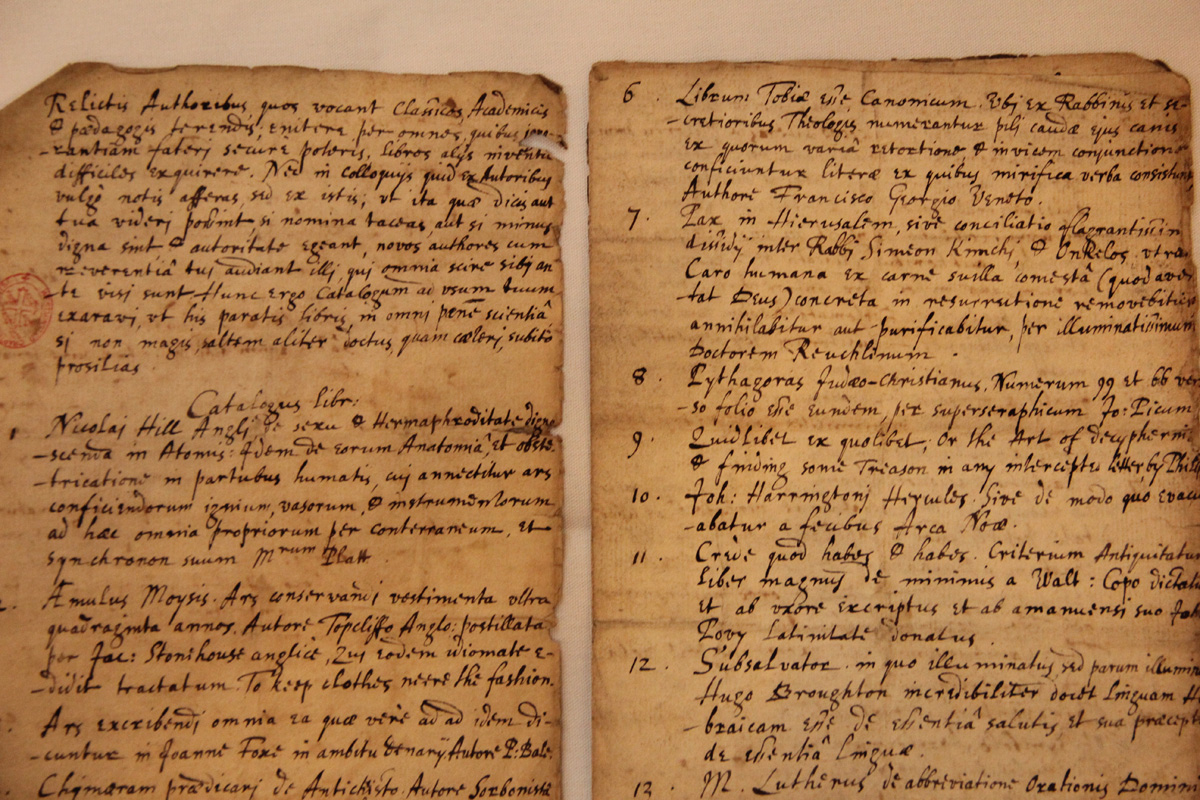Abbey finds rare 17th century manuscript in tin trunk
Friday, 3rd November 2017

The manuscript, thought to date from 1603-1604, is a copy of Donne’s The Courtier’s Library, a satirical attack on corruptions in the church and establishment: rather like a 17th century version of Private Eye.
The satire was circulated privately by Donne to friends and patrons in the early 1600s – its radical content too dangerous to print in the febrile atmosphere of James I’s court when anti-Catholic sentiment was rising, and about to explode in spectacular fashion with the intervention of Guy Fawkes.
An article about the find and its significance is due for publication in the Review of English Studies, co-authored by Donne scholar Daniel Starza Smith, Lecturer in Early Modern English Literature at King’s College London, and Matthew Payne, Keeper of the Muniments at Westminster Abbey, who discovered the manuscript.
It was discovered when Matthew Payne was working through a trunk of unsorted fragments of early documents in the Abbey’s Library in autumn 2016. Intrigued by what he recognised to be an early 17th century skit on contemporary book lists, he entered the Latin text into a search engine, and found that he had come across a copy of The Courtier’s Library, or Catalogus Librorum Satiricus, as Donne himself calls it in Latin – a relatively obscure work. The only other known contemporary handwritten copy in existence is at Trinity College, Cambridge. The Abbey manuscript is not in Donne’s own hand, but is the earliest surviving text - one of the earliest literary works of the Jacobean reign.
Daniel Starza Smith, Lecturer in Early Modern English Literature, King’s College London, said:
This is an extremely exciting find, and gives us important new clues about the life and writing of one of our most important writers. We might think of “fake news” as a modern phenomenon, but Donne saw something similar happening around him. He was horrified at the corruption of truth by the powerful, greedy, and wilfully ignorant, and he responded with this vicious satire, which was too dangerous to print until after his death. This discovery helps us understand how it circulated furtively among his trusted friends.
Matthew Payne, Keeper of the Muniments, Westminster Abbey said:
It was clear almost immediately that this document was unlike the others which were in the trunk with it. Most of those are in small pieces and were leftover fragments of low-level administrative records of the late medieval and early modern period. It is always exciting to find something new, and of course as soon as I worked out what it was, it was clear that it was a document of some importance. It is very gratifying to be able to set it in context, and to add to our knowledge of Donne and his activities at this time in his life. But a mystery remains: how did it come to find its way to Westminster Abbey?
The satire dates from a difficult period in Donne’s early married life when he had lost his position in society as secretary to the Lord Keeper of the Great Seal, Sir Thomas Egerton. He had fallen in love with Sir Thomas’ seventeen-year old niece, Anne More, and married her secretly in 1601 against her father and uncle’s wishes. The loss of his livelihood and status was a major blow to Donne. The Courtier’s Library may testify to the resentment and bitterness he must have felt at the time.






